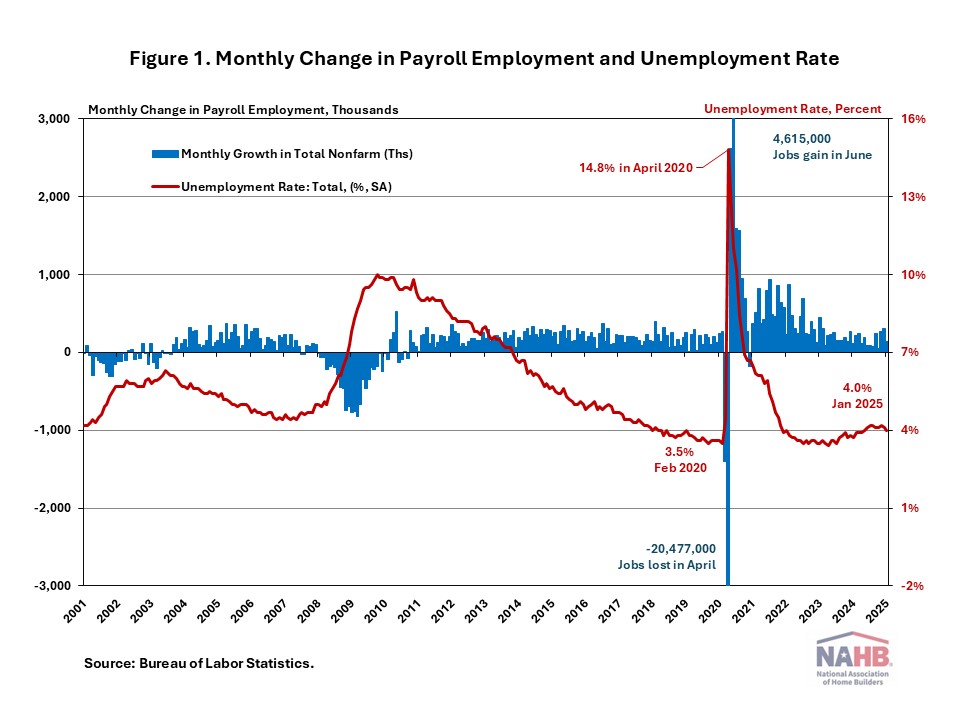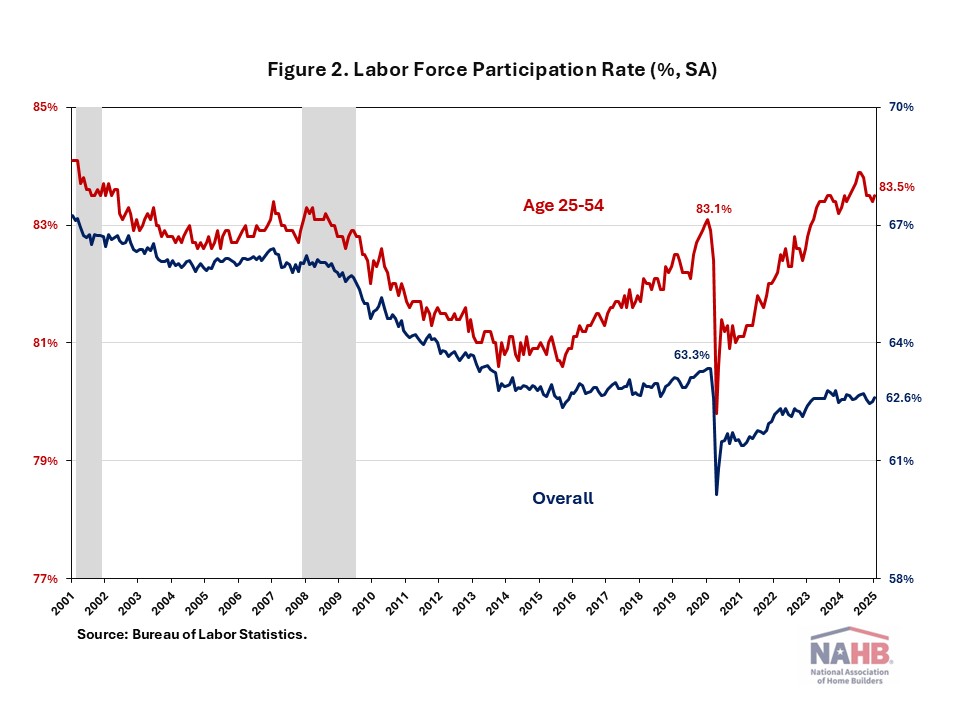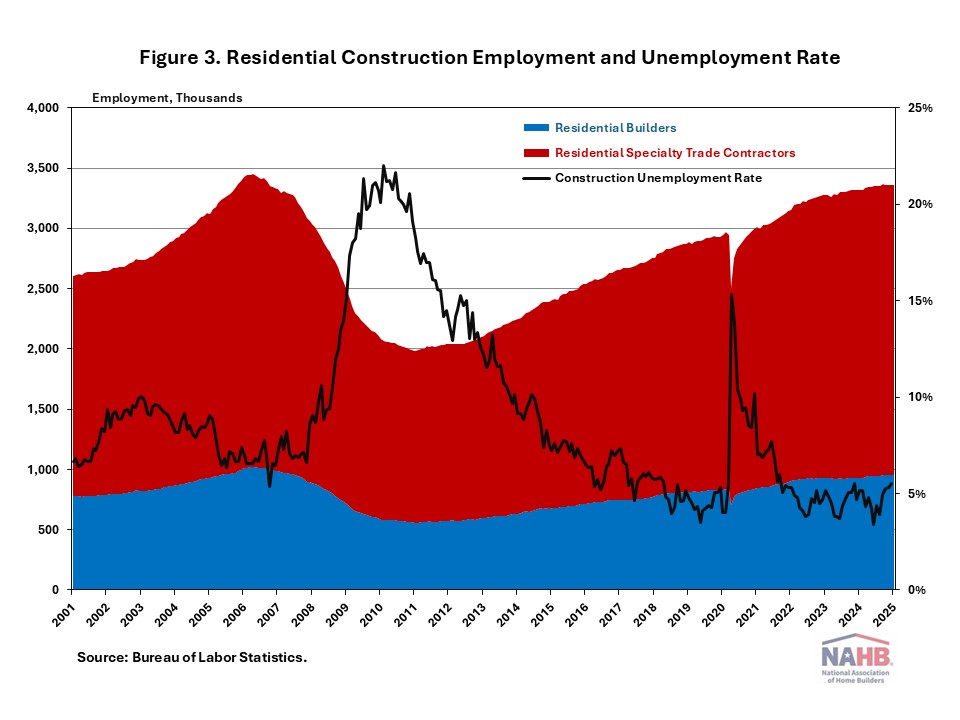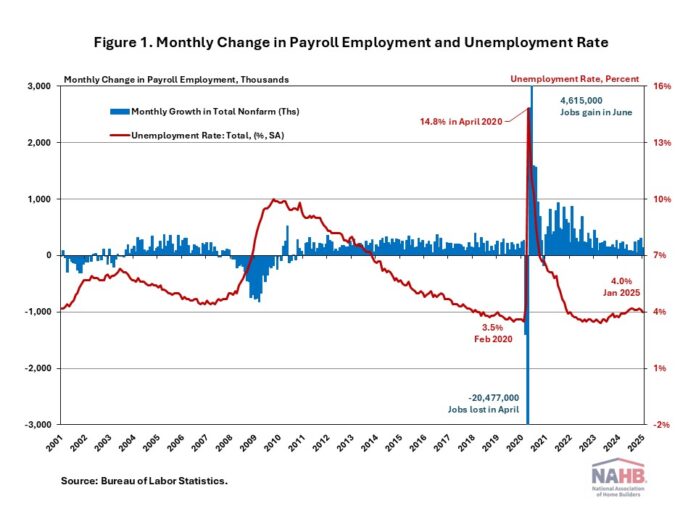U.S. job growth slowed in January amid Southern California wildfires and severe winter weather across much of the country. Meanwhile, the unemployment rate edged down to 4.0%. This month’s data indicates that the labor market is slowing at the start of 2025 but remains healthy.
In January, wage growth remained unchanged from the previous month. Year-over-year, wages grew at a 4.1% rate, down 0.2 percentage points from a year ago. Wage growth is outpacing inflation, which typically occurs as productivity increases.
On the annual benchmark revision of the Current Employment Statistics (CES), the seasonally adjusted total nonfarm employment for March 2024 was revised down by 589,000. The average monthly pace of job growth for 2024 was revised down from a previous estimate of 186,000 per month to an average of 166,000.

National Employment
According to the Employment Situation Summary reported by the Bureau of Labor Statistics (BLS), total nonfarm payroll employment rose by 143,000 in January, the lowest monthly gain in the past three months. Since January 2021, the U.S. job market has added jobs for 49 consecutive months, making it the third-longest period of employment expansion on record.
The estimates for the previous two months were revised up. The monthly change in total nonfarm payroll employment for November was revised up by 49,000, from +212,000 to +261,000, while the change for December was revised up by 51,000 from +256,000 to +307,000. Combined, the revisions were 100,000 higher than previously reported.
The unemployment rate decreased to 4.0% in January, after accounting for the annual adjustments to the population controls. While the number of employed persons increased by 2,234,000, the number of unemployed persons decreased by 37,000.
Meanwhile, the labor force participation rate—the proportion of the population either looking for a job or already holding a job—increased one percentage point to 62.6%. For people aged between 25 and 54, the participation rate rose one percentage point to 83.5%. While the overall labor force participation rate remains below its pre-pandemic levels of 63.3% at the beginning of 2020, the rate for people aged between 25 and 54 exceeds the pre-pandemic level of 83.1%.

In January, employment in health care (+44,000), retail trade (+34,000), and social assistance (+22,000) increased, while employment declined in the mining, quarrying, and oil and gas extraction industries.
Construction Employment
Employment in the overall construction sector increased by 4,000 in January, after 13,000 gains in December. While residential construction lost 200 jobs, non-residential construction employment added 4,400 jobs for the month.
Residential construction employment now stands at 3.4 million in January, broken down as 956,000 builders and 2.4 million residential specialty trade contractors. The 6-month moving average of job gains for residential construction was 1,350 a month. Over the last 12 months, home builders and remodelers added 40,100 jobs on a net basis. Since the low point following the Great Recession, residential construction has gained 1,376,600 positions.
The unemployment rate for construction workers has remained at a relatively lower level, after reaching 15.3% in April 2020 due to the housing demand impact of the COVID-19 pandemic.

Discover more from Eye On Housing
Subscribe to get the latest posts sent to your email.

